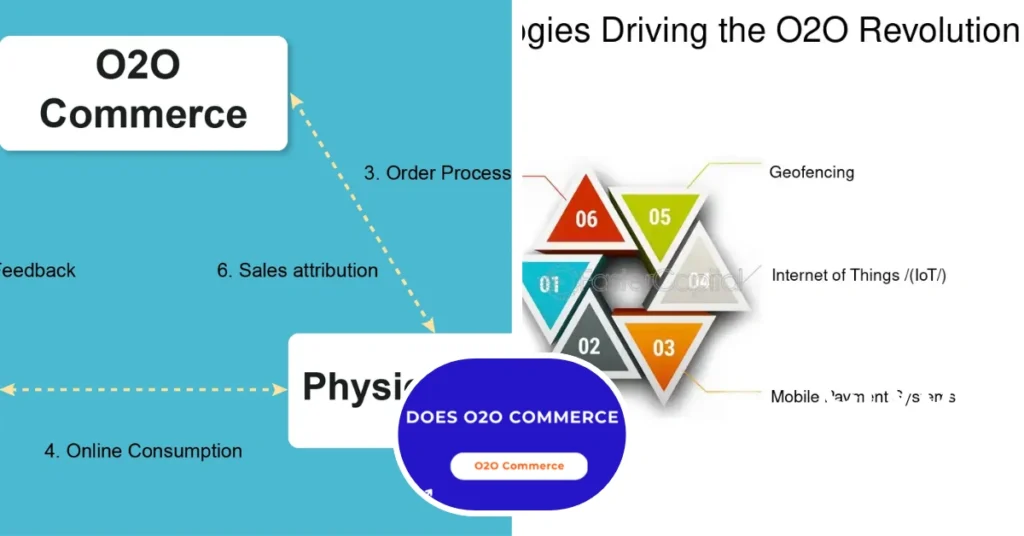In today’s fast-paced digital landscape, businesses are constantly seeking innovative ways to bridge the gap between online and offline experiences. This is where O2O technology comes into play, transforming how companies engage with their customers at every touchpoint. If you want to stay ahead of the competition, understanding and implementing an effective O2O technology integration roadmap is crucial.
Imagine a world where your online promotions drive foot traffic into your brick-and-mortar store or where customers can seamlessly transition from browsing products on their phones to purchasing them in person. Sounds appealing, right? With the right strategy in place, this vision can become a reality.
Here, we’ll unravel the steps necessary for successful O2O integration. From identifying your target audience to leveraging both online presence and offline channels effectively—this guide will provide you with actionable insights needed for success in today’s hybrid marketplace. Let’s dive deep into harnessing the full potential of O2O technology!
Understanding O2O Technology
O2O technology, or Online-to-Offline, is a strategy that connects digital interactions with physical experiences. It enables businesses to engage customers online while driving them to offline locations for purchases or services.
At its core, O2O relies on seamless integration between e-commerce platforms and traditional retail environments. This synergy allows brands to deliver targeted promotions online that encourage in-store visits.
The rise of mobile devices has accelerated the effectiveness of O2O strategies. Consumers can browse products at their convenience and receive tailored offers directly through apps or websites.
Additionally, location-based services play a significant role in this landscape. By utilizing geolocation data, businesses can reach potential customers when they are nearby, enhancing both engagement and foot traffic.
Understanding the nuances of O2O technology opens up new avenues for customer interaction and loyalty-building—paving the way for innovative business models.
Benefits of O2O Integration for Businesses
O2O integration offers a seamless connection between online and offline channels, enhancing customer experience. Businesses can reach consumers where they are most comfortable—whether browsing online or shopping in-store.
This integration drives increased foot traffic to physical locations. When customers discover products online, they’re more likely to visit the store for a hands-on experience.
Moreover, O2O strategies enable targeted marketing efforts. Companies can gather data on customer preferences and behavior, tailoring promotions that resonate with their audience.
Sales opportunities multiply as businesses create cohesive journeys across platforms. A well-executed O2O approach nurtures loyalty by allowing customers to engage through various touchpoints.
Additionally, operational efficiency improves as inventory management becomes more streamlined. Businesses gain insights into demand patterns and adjust stock accordingly.
The result? Enhanced sales performance and satisfied customers who enjoy a holistic shopping experience tailored just for them.
Steps to Successful O2O Integration
Successful O2O integration begins with a clear strategy. Identify your business goals and how online and offline channels can complement each other.
Next, assess your current technology stack. Ensure your systems can seamlessly share data between platforms. This foundation is crucial for an integrated experience.
Engage employees in the process. Training staff on new tools fosters buy-in and helps them understand their role in delivering a cohesive customer journey.
Additionally, leverage existing customer insights to tailor offerings. Personalization nurtures relationships, increasing retention rates while enhancing brand loyalty.
Testing different approaches enables refining strategies over time. Gather feedback from customers to determine what works best and make necessary adjustments swiftly.
Identifying Your Target Audience
Identifying your target audience is pivotal for successful O2O Technology Integration Roadmap. Start with demographics, such as age, gender, and location. This data paints a clearer picture of who you’re aiming to reach.
Next, delve into psychographics. Understand their interests, values, and behaviors. What motivates them? What challenges do they face? These insights help tailor your strategies effectively.
Utilize tools like surveys or social media analytics to gather information. Engaging with customers directly can reveal their preferences and habits.
Segmenting your audience allows for personalized marketing approaches. Different segments may respond better to different messages or channels.
Keep an eye on competitors as well; analyzing their audience engagement can provide valuable clues about potential gaps in the market that you could fill.
Creating an Online Presence
Creating an online presence is essential for successful O2O integration. It’s your digital storefront, accessible to customers around the clock.
Start by developing a user-friendly website that reflects your brand identity. Ensure it’s mobile-responsive since many users browse on their phones.
Social media platforms are powerful tools for engagement. Choose channels where your target audience spends time and share valuable content consistently.
Invest in search engine optimization (SEO) to improve visibility. Use relevant keywords related to your products or services, helping potential customers find you effortlessly.
Don’t forget about email marketing! It allows you to connect directly with customers, offering promotions and updates that keep them engaged.
Consider creating informative blog posts or videos that address customer pain points. This not only positions you as an authority but also fosters trust among potential buyers seeking reliable information before making a purchase decision.
Utilizing Offline Channels
Offline channels still hold significant value in the O2O landscape. Businesses can tap into traditional marketing methods to create a cohesive experience for customers.
Consider integrating print materials like brochures or flyers that direct consumers to online platforms. Clear calls-to-action encourage immediate engagement, bridging the gap between digital and physical spaces.
Events provide another rich opportunity. Hosting workshops, pop-up shops, or community gatherings allows brands to connect with potential customers face-to-face. This personal touch fosters trust and loyalty.
Additionally, leveraging signage in stores can enhance customer journeys. Eye-catching displays highlighting exclusive online offers entice shoppers to explore further.
Don’t overlook partnerships with local businesses. Collaborating on promotions expands reach while reinforcing brand presence within the community.
By creatively using offline channels, companies enrich their O2O strategy and drive meaningful interactions that lead to conversions.
Implementing Data-Driven Strategies
Data-driven strategies are essential in achieving successful O2O Technology Integration Roadmap. By harnessing the power of data analytics, businesses can gain insights into customer behaviors and preferences.
Start by collecting relevant data from both online and offline sources. This includes website traffic, social media engagement, and in-store interactions. Integrating these datasets creates a comprehensive view of your customers.
Analyze trends to identify opportunities for improvement. Use this information to tailor marketing campaigns that resonate with your audience. Personalization is key; customers appreciate experiences that speak directly to their needs.
A/B testing is another powerful tool within this realm. Experiment with different approaches to find what works best for your brand.
Regularly revisit your data strategy as consumer behavior evolves over time. Staying agile allows you to adapt quickly, ensuring continued relevance in an ever-changing market landscape.
Measuring Success and Making Adjustments
Measuring the success of your O2O Technology Integration Roadmap is vital for ongoing growth. Start by establishing clear KPIs that align with your business goals. These can include metrics such as customer engagement rates, conversion ratios, and sales figures.
Regularly analyze data from both online and offline channels. This holistic view helps you identify trends and areas needing improvement. Use tools like Google Analytics or CRM systems to track user behavior effectively.
Listening to customer feedback is equally important. Surveys, reviews, and social media interactions provide invaluable insights into what works and what doesn’t.
Stay agile in your approach. The marketplace shifts rapidly; be prepared to pivot strategies based on real-time data analysis. Continuous optimization ensures that your integration remains relevant and effective over time, ultimately boosting overall performance in a competitive landscape.
Case Studies of Successful O2O Integration
Several companies have successfully navigated the O2O technology landscape, showcasing innovative strategies that others can learn from.
One notable example is Starbucks. The coffee giant integrates its mobile app with physical locations seamlessly. Customers order ahead and pick up their drinks without waiting in line. This approach enhances customer experience while driving increased sales.
Another impressive case is Warby Parker’s fitting program. Users can try on glasses at home before making a purchase online. By bridging the gap between digital and physical experiences, they’ve transformed how customers shop for eyewear.
Nike has also made waves with its “Nike by You” concept, allowing personalization online followed by in-store pick-up or delivery options. This fusion of online customization with offline fulfillment enriches user engagement significantly.
These examples illustrate diverse methods of effective O2O integration across various industries, emphasizing creativity and customer-centric approaches as keys to success.
Conclusion and Future of O2O Technology
O2O Technology Integration Roadmap is not just a trend; it represents the future of how businesses connect with consumers. As more companies adopt this model, understanding its nuances becomes essential for staying competitive.
The landscape of retail and service industries continues to evolve rapidly. With advancements in mobile technology, artificial intelligence, and data analytics, O2O strategies will become increasingly sophisticated. Companies that leverage these tools can create personalized experiences that resonate with customers both online and offline.
Looking forward, we can expect an even greater emphasis on seamless interactions across platforms. Businesses that prioritize customer experience in their O2O strategy will likely outperform competitors who don’t adapt to this shift.
As you embark on your own O2O technology integration roadmap, remember that flexibility and innovation are key. The journey may be challenging but offers rewarding opportunities for growth and connection with your audience. Embrace the change as it unfolds within your industry—your business’s success depends on it.
For an in-depth analysis, check out our article on Current Influencer NYT Crossword: Decoding the Clue.







